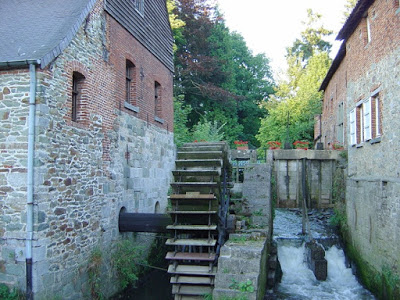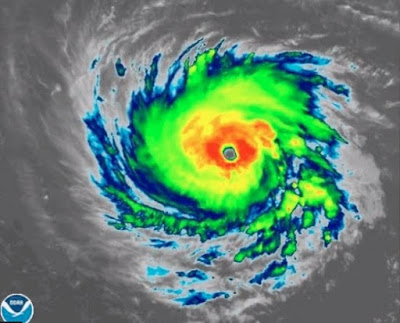|
What are the Origins of Wealth?
Economics textbooks describe wealth as an accumulation of all financially valuable resources. It is our collective beliefs that give this accumulated stock value. Human labor uses this stock to produce more stuff through the GDP thereby enabling overall wealth to grow with time.
At least on the face of it, this view of the economy makes a lot of sense. Economists have mathematical equations that express these ideas providing quantitative descriptions for how and why the economy grows.
Yet something still seems unsatisfyingly magical. Why should we believe in the concept of economic value in the first place?. The existence of a financial system is hardly obvious. It hasn’t always existed through history, even during periods where people produced and consumed. And most of what we do in our lives (fortunately) doesn’t involve any exchange of currency at all. We are able to enjoy a good moment of each other’s company without having to pay a single cent.
The Economy and the Second Law
Sure, financial wealth is a human quantity, but we are still part of the physical universe. No matter how rich we may be, we are all equal subjects of its rules.
Chief among these rules is the Second Law of Thermodynamics. The Second Law has been expressed in many ways that are either wrong, strangely mystical, or maddeningly vague. It doesn't have to be this way. The most straightforward is to view the direction of time as a flow of matter that redistributes energy to ever lower potentials. Drop something it falls. It was up, now it’s down; air flows from high to low gravitational potential or pressure to make the winds. Easy.
Take the waterwheel in a mill. A mill consumes high gravitational potential energy from a flowing stream. The flow drives the wheel circulations and finishes its journey in the stream below where the potential energy is becomes unusable. The total capacity of the mill to dissipate potential energy, its size or “stock”, is something we can estimate by looking at the size of the mill and noting how fast it circulates.

Or how about a hurricane? The pressure difference between the eye of the hurricane and its surroundings provides the potential energy with which to drive the winds while the hurricane constantly loses energy by radiating to space. Again the hurricane has a size or "stock" that defines its power.

What does this have to do with the economy? Well, everything. Our perceptions are based on neuronal activity in the form of cyclical transfers of charge from high to low potential in our brains. The cycles are sustained by by high potential calories in food that we dissipate as waste heat from our bodies. Our food is produced with high potential fossil fuels that we burn to till the land, produce fertilizer and transport from farm to market. We get to and from market using gasoline that is dissipated in our cars. The money we use to buy food comes from the fruits of our labors staring at computers that that themselves dissipate energy as they make computations with a certain cycle frequency and transfer data to and from other computers along communication networks, all of which turns high potential energy to low potential waste heat.
But can we really reduce all this to something as simple as a waterwheel or hurricane? There’s 7+ billion of us, our brains are so complicated, and the economy is so big.
All the circulations in civilization are ultimately derived from the consumption and dissipation of high energy density “primary energy resources”. As a global organism, our civilization collectively feeds on the energy in coal, oil, natural gas, uranium, hydroelectric power and renewables. Civilization continually consumes these resources to accomplish two things: the first is to propel all civilization’s internal back-and-forth “economic” circulations along its accumulated networks; the second is to incorporate raw materials into our structure in order to grow and maintain our current size against the ever present forces of dissipation and decay.
Energy, from whatever source, powers our machines, our telecommunications, modern agriculture, and the supply of the meals that give us the energy to sustain our thoughts, attention, and perceptions. Without energy, civilization would no longer be measurable. Everything would grind to a halt. Nothing would work. Lacking food, we would be dead and our attention span with it. The gradient that meaningfully distinguishes civilization from its environment would disappear. Value would vanish.
Wealth is power
Stepping back to see the world economy as a simple physical object, one where people are only part of a larger whole, would be a stretch for a traditional economist hung up on the idea that wealth must be restricted to physical capital rather than people. But, crucially, unlike traditional models, it is an idea that can be rigorously tested and potentially disproved. It is a hypothesis that is falsifiable.
I have shown in peer-reviewed studies published in Climatic Change, Earth System Dynamics, and Earth’s Future that the observed relationship between the current rate of energy consumption or power of civilization, and its total economic wealth (not the GDP), is a fixed constant of 7.1 ± 0.1 milliwatts per inflation-adjusted 2005 dollar.
Equivalently, every 2005 dollar requires 324 kiloJoules be consumed over a year to sustain its value. In 2010, the global energy consumption rate of about 17 TW sustained about 2352 trillion 2005 dollars of global wealth. In 1970, both numbers were about half this. Both quantities have increased slowly by about 1.4% per year to 2.2% per year averaging a growth rate of 1.90% /year. The ratio of the two quantities has stayed nearly constant over a time period when both wealth and energy consumption have more than doubled and the rates of growth have increased by about 50%. Currency is the psychological manifestation of a capacity to dissipate energy.
Can wealth continue to grow?
What this means is that we must continue to grow our capacity to consume primary energy reserves just to grow our wealth. We should never conclude that growth can’t continue over coming decades, as some claim in perennial doomsday predictions. It’s just that there is nothing stronger than inertia to guarantee that it will. The water wheel in the picture above can rot or the river can dry. Hurricane low pressures can dissolve. For us, continued consumption growth may quite plausibly become too difficult due to depletion of energy and mineral reserves or accelerating environmental disasters such as climate change. If this happens, all our efforts to produce growth can be expected to be more than offset by decay.
At some point, all systems experience decay and collapse. We’ve seen the waxing and waning of civilizations throughout history. Historical studies suggest that any long-term decline in a society’s capacity to consume forebodes hyper-inflation, war, and population decline. The question for us should not be whether collapse will happen, but when, and whether it will be slow or sudden.
ABOUT THE AUTHOR
Tim Garrett is Professor, Atmospheric Sciences, University of Utah, where he leads the Aerosol-Cloud-Climate Systems group. The earth's climate displays many tightly interwoven processes that cover vast scales in time and space. Clouds play a particularly vital role, by removing pollutants, and by acting as pistons in the atmospheric heat engine. But they are extraordinarily complex, so their relationship with climate remains largely mysterious. Is the problem fundamentally simple or impossibly complex? The Aerosol-Cloud-Climate Systems he jeads is trying to tease from clouds their importance to various atmospheric chemical, dynamic and radiative processes. A second focus is development of a thermodynamic basis for interpreting the evolution of the global economy, and its relationship to atmospheric concentrations of carbon dioxide. Central to the model is the finding that civilization's economic value or wealth, when adjusted for inflation, is linked to its rate of primary energy consumption through a constant.
|
|Back to Title|
LINK TO THE CURRENT ISSUE
LINK TO THE HOME PAGE
|